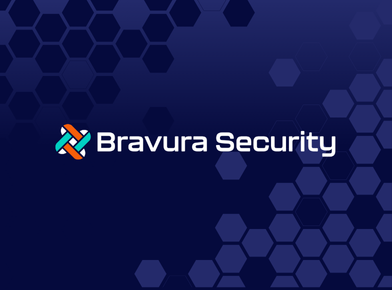With all the sensitive data financial institutions collect, it should come as no surprise that the financial services industry is one of the top targets for cybercriminals. That’s also why compliance with stringent regulations and standards is so important — in fact, it’s essential for doing business. In the interconnected financial landscape, managing multiple point solutions for compliance and security creates unnecessary complexity and potential gaps. A unified approach to identity security and compliance has become essential. Learn the most important components of regulatory compliance and identity security below.
An Overview of Key Regulatory Frameworks
Using a regulatory framework can help simplify compliance management by providing clear guidelines for adhering to key industry standards and regulations.
One especially prominent example is the National Institute of Standards and Technology (NIST) Cybersecurity Framework. Many organizations voluntarily adopt this framework from the NIST as part of a proactive approach to managing cyber threats.
Many institutions will implement multiple frameworks as part of a multi-layered approach to cybersecurity, which can help close identity security gaps and improve compliance processes. While frameworks like NIST provide valuable guidance, implementing them effectively requires a holistic view of identity security. Fragmented solutions that handle different aspects of compliance separately can create blind spots and increase operational overhead.
Identity Security in Financial Institutions
Identity protection is just as critical in the financial sector as it is in government, healthcare and other highly regulated industries.
As part of their typical operation, financial institutions collect highly sensitive data from customers, such as:
- Credit card information
- Bank account and routing numbers
- Personal addresses
- Social Security numbers
- Tax documents
- Credit history records
- Investment records
Adhering to the applicable industry regulations is critical for keeping this information safe and retaining the trust of your customers. Beyond that, though, data breaches can cost financial institutions hundreds of thousands — or even millions — in non-compliance penalties.
Key Regulatory Compliance Measures
Some of the most important regulations that apply to the financial industry include:
- PCI DSS: Any financial institution that processes payments from major credit and debit card providers must meet specific obligations for protecting cardholder data, including end-to-end encryption and advanced authentication.
- Sarbanes-Oxley Act (SOX): All financial institutions must disclose their procedures for data collection to all current and potential investors. The act also requires institutions to publicly report data breaches as soon as possible.
- Gramm-Leach-Bliley Act (GLBA): Financial institutions must disclose what nonpublic personal information they collect in order to provide financial products or services.
There are also some regional regulations that may apply to your institution:
- California Consumer Privacy Act (CCPA): Institutions meeting certain criteria that do business with Californian citizens must give customers complete transparency over how they collect and use customer data. The act also gives customers greater control over what companies can do with their data.
- General Data Protection Regulation (GDPR): Companies processing data from citizens of the European Union (EU) must get consent in order to collect and use that data. They are also required to report any security incidents in a timely fashion.
Challenges and Complexities in Compliance
Striking a good balance between robust identity security and a good customer experience (CX) is one of the biggest challenges financial institutions face in cybersecurity compliance.
Today’s customers expect efficient and personalized service — so much so that data-driven personalization has become an essential part of gaining customer trust. The challenge is gathering and using that data in a way that complies with the industry’s most important cybersecurity regulations.
And that task becomes even more challenging when you consider that regulatory requirements are constantly changing in response to the evolving threat landscape.
Essentially, financial institutions must continuously prioritize transparency and data security in order to create the personalized experiences customers look for. Applying an Identity and Access Management (IAM) solution to your customer-facing applications can help you enhance CX and improve your security posture by empowering your customers to take more control over their data.
Financial institutions often struggle with:
- Managing multiple security tools that don’t communicate effectively
- Maintaining consistent access policies across different systems
- Reconciling conflicting compliance requirements across jurisdictions
- Tracking privileged access alongside regular user activity
Building a Robust Identity Security Framework
Protecting sensitive user information from unauthorized access is non-negotiable in today’s digital era. The challenge of protecting sensitive financial data is compounded when organizations rely on disparate systems for Privileged Access Management (PAM) and IAM. This siloed approach can create security gaps and complicate compliance efforts. A unified identity security platform provides comprehensive visibility and control across all access types.
Using Technological Solutions for Compliance
Implementing the right software solutions can help you improve compliance processes by simplifying your responsibilities.
Many institutions combine multiple software tools to create a comprehensive solution, which can include:
- IAM systems: A holistic IAM solution helps protect sensitive data by ensuring the right people get the right level of access to the right information.
- SIEM tools: Security information and event management (SIEM) tools use a set of predefined rules to identify threats and alert security teams in real-time.
- Automation: Tech tools with automation capabilities streamline compliance by running key security functions such as scanning for vulnerabilities and mitigating known threats.
While point solutions can address individual compliance requirements, a unified identity security platform provides centralized policy management, comprehensive audit trails, automated compliance reporting, integrated privileged access controls, and seamless integration with existing systems.
Incident Response and Reporting
Most financial institutions — banks especially — are required to have well-designed incident response plans to comply with regulations.
But the importance of an incident response plan goes beyond avoiding fines. Having a clear, actionable plan will help your institution minimize losses and recover faster in the event of a cyberattack.
Ideally, your incident response plan should be a document you can easily adapt to changes in the industry and threat landscape. It can help to review your plan with an attorney to ensure your plan covers all the important regulation requirements.
Although it can result in reputational damage, financial institutions must be transparent with their customers in the aftermath of a security incident. Reporting the impact of a data breach is a key component of compliance with industry regulations, such as SOX and GLBA.
Future Trends and Considerations
Cybercriminals are constantly changing their tactics, which is why regulatory bodies have begun revising their requirements more frequently. Over the next few years, we’re likely to see stricter regulations and higher penalties for non-compliance, which is why organizations should be well prepared.
Adopting a proactive stance toward cybersecurity is critical for ensuring your financial institution can stay ahead of evolving threats and keep up with regulation updates. That’s where a robust identity security system comes in — software systems that update frequently equip your institution to face whatever the future will bring.
This blog was originally published here.
About the Author: John serves as the VP of Customer Experience at Bravura Security, bringing over 15 years of IT, IAM, and broader cybersecurity expertise to the forefront of elevating customer engagement strategies. His journey, rooted in architectural and analytical skills, has evolved into a strategic leadership role, where he champions customer experience and enablement programs. With a passion for bridging the gap between technical solutions and business needs, John specializes in developing strategies that enhance field and sales enablement, operational excellence, and the overall customer journey. His approach is dedicated to fostering strong partnerships and ensuring that the engagement process—from presales evaluation, through initial consultation and design, to the post-implementation hand-off and beyond—lays the foundation for lasting relationships. John’s contributions extend beyond specific roles, reflecting his commitment to driving innovation and excellence in an ever-changing digital landscape.
About the Company: Bravura Security is an industry leader, delivering best-in-class identity, privileged access, password, and passwordless products. Bravura Security software has helped Fortune 500 companies around the world protect their companies over the last two decades against increasing cybersecurity threats. The Bravura Security Fabric is a fully integrated solution of best-in-class products that manage identities, security entitlements, and credentials for both business users and privileged accounts, on-premises and in the cloud. Bravura Security is well known for high scalability, fault tolerance, pragmatic design, and low total cost of ownership (TCO). Bravura Security is recognized by customers and analysts for industry-leading customer service.






